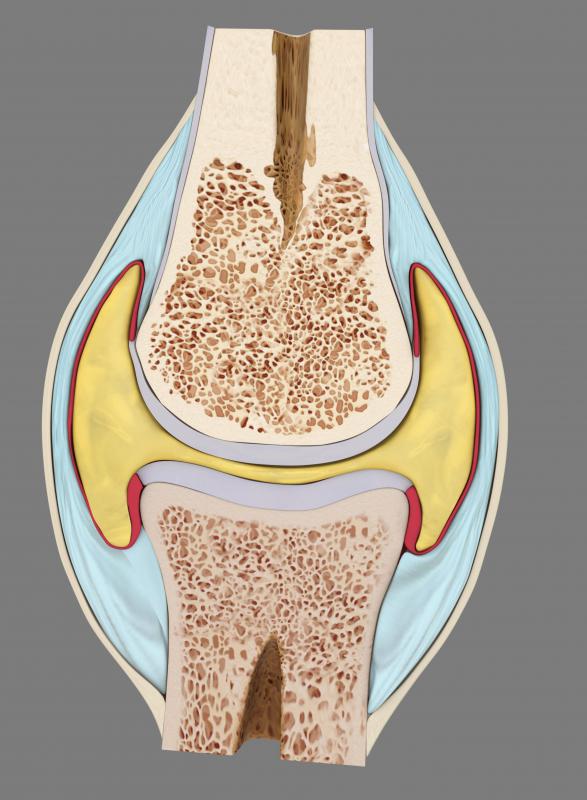At WiseGEEK, we're committed to delivering accurate, trustworthy information. Our expert-authored content is rigorously fact-checked and sourced from credible authorities. Discover how we uphold the highest standards in providing you with reliable knowledge.
What Are the Different Synchondroses?
Synchondroses are immovable, temporary joints that connect two bones with cartilage. By adulthood, the body converts the cartilage to bone through a process known as ossification or transforms it into fibrocartilage. In humans, these joints are found in the skull, connecting the long bones like the tibia and femur bones of the leg, and attaching the first rib to the breastbone.
Anatomists classify joints as fibrous, cartilaginous or synovial. Synchondrosis joints are cartilaginous and initially, a type of cartilage known as hyaline connects the two bones. Hyaline cartilage contains less collagen than the denser fibrocartilage that may replace it. Once fibrocartilage replaces the hyaline cartilage, the joints are no longer referred to as synchondroses but are instead called symphyses. If the cartilage undergoes ossification, the joint disappears into the bone and loses its separate identity.

Synchondroses in the skull ossify to form bone tissue. The first of these joints are normally ossified by the infant's first birthday. Other synchondroses take from 2 to 14 years to turn into bone, although rarely one or more synchondrosis may remain until early adulthood. Skull synchondroses are often associated with easing the passage of the infant through the birth canal, but they also allow room for the infant's brain to grow at a rapid rate.

In the leg, the end of the femur and the end of the tibia are not fused at birth. The two ends actually have a synchondrosis separating them. This immovable joint is what permits the bones to continue to grow with the child. By approximately 25 years of age, the synchondrosis has ossified and the joint disappears into the bone.
Unlike the synchondroses found in the skull and legs, the joint attaching the rib to the breastbone converts to fibrocartilage rather than bone. This is fibrous cartilage is tougher than hyaline and allows even less movement. The fibrocartilage acts to stabilize the upper thorax, which is the area of the chest containing the lungs and heart.

Cartilaginous joints such as synchondroses have little similarity to synovial joints but share some of the same characteristics as fibrous joints. Synovial joints have a great range of movement, and the classification includes joints such as knees, shoulders and elbows. Fibrous joints have little ability to move and some of them disappear with age, just like synchondroses. Unlike a synchondrosis, however, a fibrous joint has ligaments that help maintain the connection between bones.
AS FEATURED ON:
AS FEATURED ON:















Discuss this Article
Post your comments